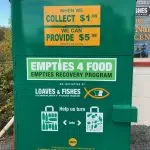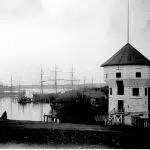
Whale experts confident orca calf will survive, find family if rescue plan succeeds
The odds of a two-year old killer whale calf surviving in the open ocean on its own and eventually reuniting with family members remain solid if a rescue team manages to free the orca from the Vancouver Island lagoon where she’s been trapped for nearly a month, whale experts say.
A second attempt to rescue the orca was put on hold Friday when the young whale ate an 18-kilogram portion of provided seal meat for what was believed to be the first time since getting stranded in the tidal lagoon in Little Espinosa Inlet near Zeballos, B.C. The large-scale rescue effort is expected to involve boats, nets, divers and drones and centres on a plan to catch the female calf in a large net, place her in a sling, transport her to the nearby ocean and release her.
The video confirmation of the orca calf eating the seal meat gave the rescue team, comprised of Indigenous leaders, federal Fisheries Department specialists, veterinarians and fishing experts, more time to consider their options.
The federal Fisheries Department said Sunday in a statement the killer whale calf continued to eat offered seal meat over the weekend and was observed in the lagoon actively eating herring.


